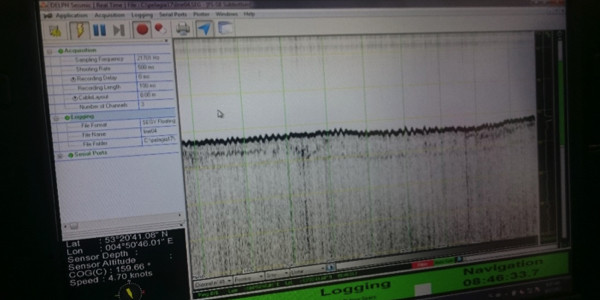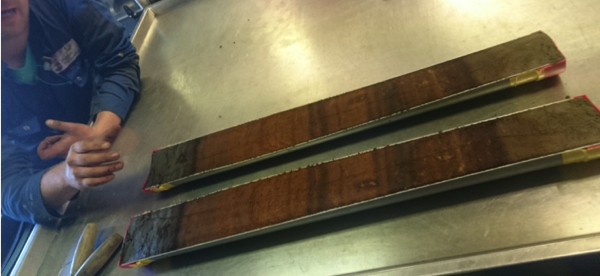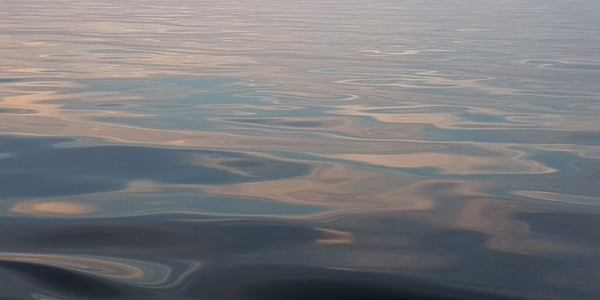Marc Hijma, Chris Mesdag (both Deltares) and Freek Busschers (TNO-Geological Survey of The Netherlands) will board the NIOZ research vessel RV Pelagia between June 16-23 to sample peat layers that mark the transition from dry to flooded land. Using seismic data and information of existing cores they will select the best sites to drill into the seafloor using a vibrocore. The research is done in cooperation with NIOZ, the universities of Utrecht (Kim Cohen) and Leeds (Natasha Barlow) and the Rijksdienst voor het Cultureel Erfgoed (RCE). Stay tuned the coming days for updates on our progress!
Stay up to date via this blog, Twitter @NIOZatSea or Facebook @NIOZnieuws
~~~for the whereabouts of R.V. Pelagia check this page~~~
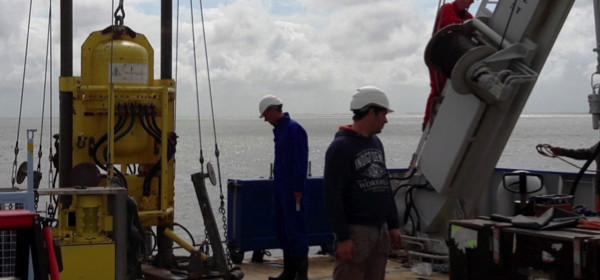
Blog 6 by Freek Busschers (TNO) & Marc Hijma (Deltares), 23 June - A detective story with an open end
It is time to go back to Texel. With us we take about 200 1m sections of sediment, gigabytes of seismic data and a bag full of increased insight. The last few days were intense. It feels like weeks ago, but during the first part of the cruise it was relatively easy to find peat. But immediately after we went back to shallower water, still about 30 m deep, it became very hard to find peat. It was there once, but it has been eroded by waves and tidal channels.
Last night we therefore decided to make a radical change to our original plans and move 50 km southward. And jackpot! In the last core of the cruise the vibrocore brought up a very nice peat below marine sand. Just another piece that will help us solve the puzzle of early Holocene sea-level changes, in understanding the relation between climate, ice sheets and sea level and hence also in improving our predictions of future sea-level changes.
We would like to say a big THANK YOU to the crew of the Pelagia for helping us during our quest for peat and sorry for the constant changes in the plans…
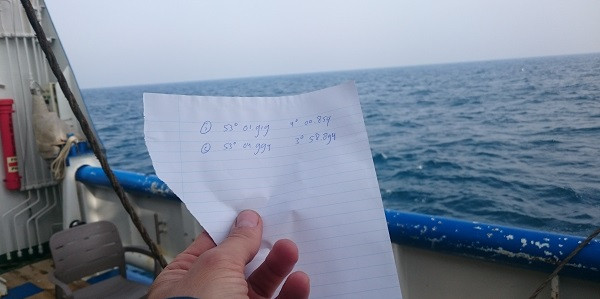
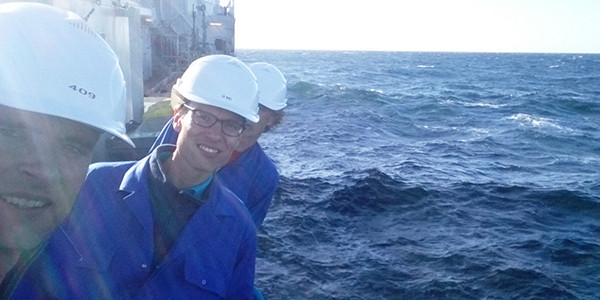
Blog 5 by Han Dolman (Vrije Universiteit Amsterdam), 22 June – Methane hunters
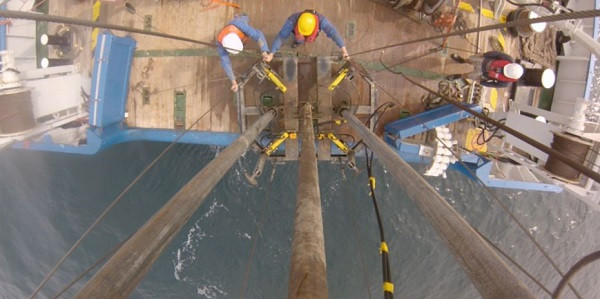
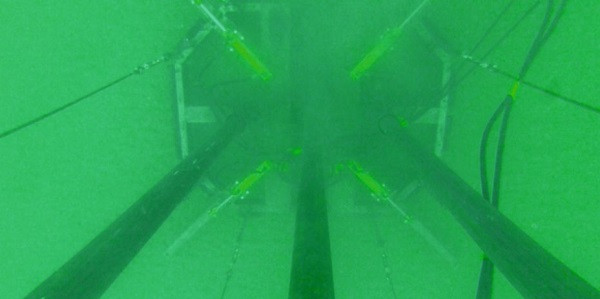
Blog 4 by expedition leader Henk de Haas (NIOZ), 21 June - Measuring phytoplankton growth
This cruise is not only about sea level rise. We also test equipment to measure algal growth. Phytoplankton (algae) are the plants of the sea. These are small plants consisting of just one single cell, but they can occur in enormous numbers.
Phytoplankton is important for all life on earth and the climate. By using sun light and carbon dioxide (CO2, the well-known greenhouse gas) it produces oxygen(O2). The oxygen is released and the carbon (C) is used. Most of the algae are eaten by animals. Only a part falls to the sea floor and is covered by sediments for thousands of years so the carbon is taken away from the CO2 cycle. This is needed to dampen the greenhouse effect and minimize climate change.
During the present cruise we are testing some fully automatic equipment that uses the amount of red light re-emitted by algae while growing. This is a measure for the growth rate. So if we know how much red light is re-emitted, we know how fast the phytoplankton is growing. NIOZ plans to use this equipment in the near future to determine phytoplankton growth and thus better understand these small but important organisms.
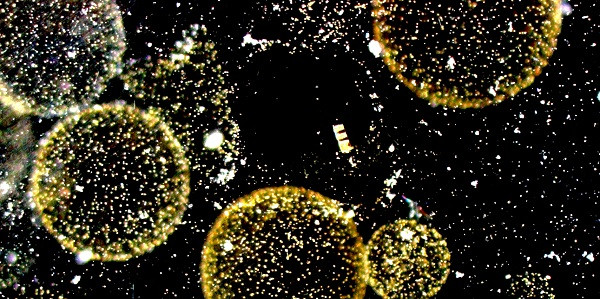
Blog 3 by Freek Busschers (TNO) & Marc Hijma (Deltares), 20th of June - Time travel
The earliest drowning of the North Sea was revealed today in stunning detail, pulling us back 10.000 years in time. Pelagia’s formidable crew obtained three exceptional cores from below the North Sea floor at water depths of 45m. The base of the cores showed last ice age dry land sands overlain by a 15cm thick peat layer. The peat is the first evidence that the area started to drown and changed into a swamp with reed and trees. Perhaps animals visited the area, or even humans, things we better will have to examine in the future. On top of the peat sediments occur that were deposited very close to a former coastline. This is shown by marine mollusks and sands with clay layers, indicating that the tides were already affecting the area at this time.
Finding 10.000 year old evidence for tides at these depths is unique in this part of the world and a real boost for us to continue collecting data from below the current sea-floor. But time is really flying when you are having fun, only three more days to go!
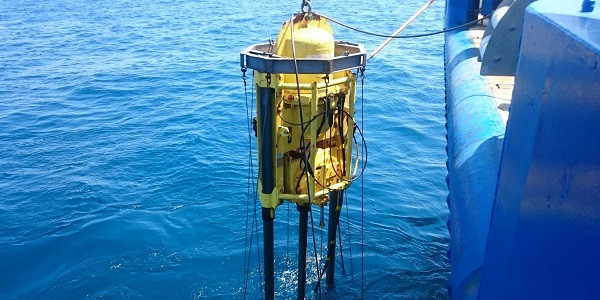
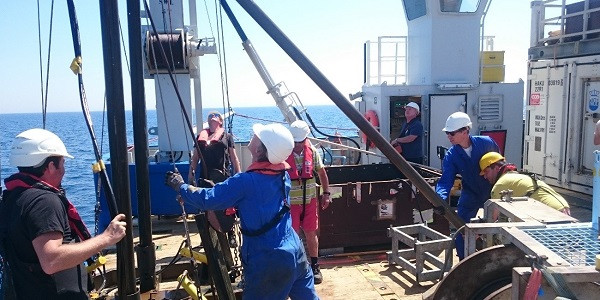
Blog 2 by Freek Busschers & Marc Hijma, 19th of June - Going deep at the Oyster Grounds
While sleeping, the Pelagia brought us far north, in an area called the Oyster Grounds. It is our farthest point and with water depths of around 50m also our deepest. Old boreholes gave us indications that we could find peat here. After seismic reconnaissance we selected some sites, but of course nature surprised us. What we found was a sediment type called gyttja, that in this case consisted of organic matter, clay and very fine sand`. Gyttja accumulates in standing water bodies like lakes, residual channels or lagoons. The clay layer on top of the gyttja looked tidally influenced.
So what did this tell us? Our first thought is that the gyttja formed in fresh water and that the transition to the clay marks the flooding of the area due to sea-level rise. If true, this would be one of the oldest sea-level indicators from the North Sea and hence we are quite excited! With old we mean in this case somewhere around 12.000-11.000 years…So partying tonight? No, sitting in a container watching seismic data coming in until 11pm. But hey, we live for this kind of work.
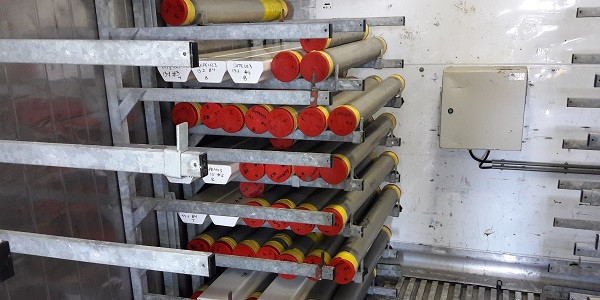
Blog 1 by Freek Busschers (TNO) & Marc Hijma (Deltares), 17th of June -
Today we had a great day with good conditions. We started doing seismics in a small area northwest of Vlieland. Our Sparker and Chirp seismics gave us stunning details in occurrence of the Early Holocene Basal peat just below the current seafloor and let us determine two locations for drilling. After a first test in which the core got stuck in glacial till, we managed to collect a total of six cores of 2.5 to 3.8m with an up-to one meter thick layer of sphagnum peat. Han Doman and Tanya Lippmann were able to collect samples of methane by drilling holes in the PVC liner, taping them and extracting the gas directly after hoisting of the core. All in all a great start of our expedition. Special thanks to Gert-Jan Reichart and Sytze van Heteren for initiating this project!
